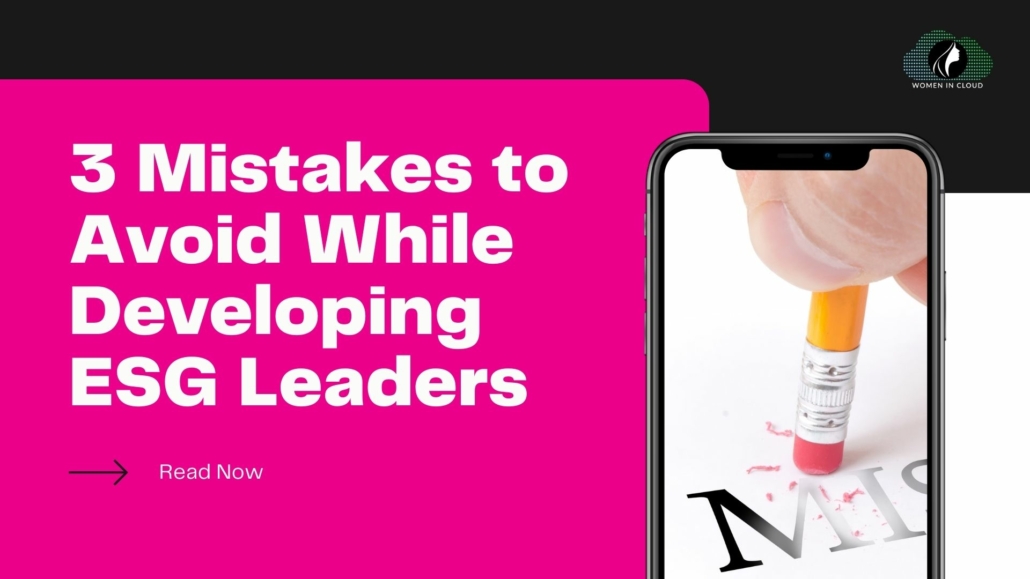The ESG movement has taken the business world by storm — encouraging companies to measure and disclose their “environmental, social, and governance” goals and impacts. The health of the movement rests in consumers and stakeholders holding businesses to higher standards; consumers want to promote positive change with their money, and investors now use ESG performance to determine the value and risk of their investments.
That’s why it has never been more important to develop diverse ESG leaders. After all, even the best ESG initiatives can fail under the wrong leadership. In this article, we’re going to explore three of the biggest mistakes companies make while developing ESG leaders — and how they can correct them.

Mistake 1: Underestimating Just How New the “ESG Leader” Role is
There isn’t yet a defined ESG leader skillset. In fact, the movement is so new that many of the heads of some of the largest companies’ ESG programs don’t have previous ESG experience. Instead, their past experience varies, including consultancy, DEI roles (diversity, equity, and Inclusion), public affairs, and trade journal editors.
You can see a pattern here. The key to developing effective ESG leaders is identifying relevant core competencies. For instance, valuable skills may include experience with research, communications, strategy deployment, key leader engagement, and cross-organizational collaboration. These are excellent qualities that can be put to use to transform a company’s impacts and values.
Mistake 2: Framing ESG as Merely a Communication Effort
While developing ESG leaders, it’s crucial to show that there’s complete buy-in from the boardroom, confluence with company values, and synergy with the business strategy. The people in charge of the initiative must know that ESG isn’t just a move to boost public relations or please stakeholders — it’s a core element of the business. It isn’t just about one department or one quarter.
This is company-wide future-proofing intended to improve the impacts of the business on its customers, employees, and world. As such, all prospective ESG leaders should maintain a clear line of communication between the board and senior management. Leaders who understand the scope, mission, and execution of ESG will be able to coordinate policy adherence across the entire company. In this way, ESG leaders will be able to achieve full adoption and burst through silos because they understand how initiative policies affect different departments.
Mistake 3: Underestimating the Importance of Diverse Women Leaders
One Deloitte survey found that executives considered diversity, equity, and inclusion as the major disclosure topic, inching out greenhouse gas emissions, health and safety, and governance practices. The importance of this cannot be overstated. If your ESG leaders and decision-makers don’t include enough diverse voices and women, then people without the lived experience of this major disclosure topic will be making decisions on their behalf.
After all, strong ESG initiatives start with great data — and there’s no better source to learn about diversity dynamics than from diverse leaders. To them, it’s personal. That’s why companies must prioritize diverse women decision-makers and consciously bring them to the table, not to check boxes, not as a gesture, but to ensure that well-informed and successful ESG goals will be proposed and accomplished.
Start Leading a Successful ESG Initiative Now
The Women in Cloud (WiC) team spends a lot of time with enterprise ESG initiatives. The truth is, many organizations don’t have access to an ESG-driven leadership program that empowers women, and as a result, they’re incurring a massive opportunity cost.
That’s why we created a next-generation Corporate ESG Women’s Leadership Program called WICxLead.
The WICxLead program solves the inclusive programming problem for CEOs and their board of directors by helping them develop an ESG business case and operating model while accelerating brand, thought, and community development. Ready to start?




